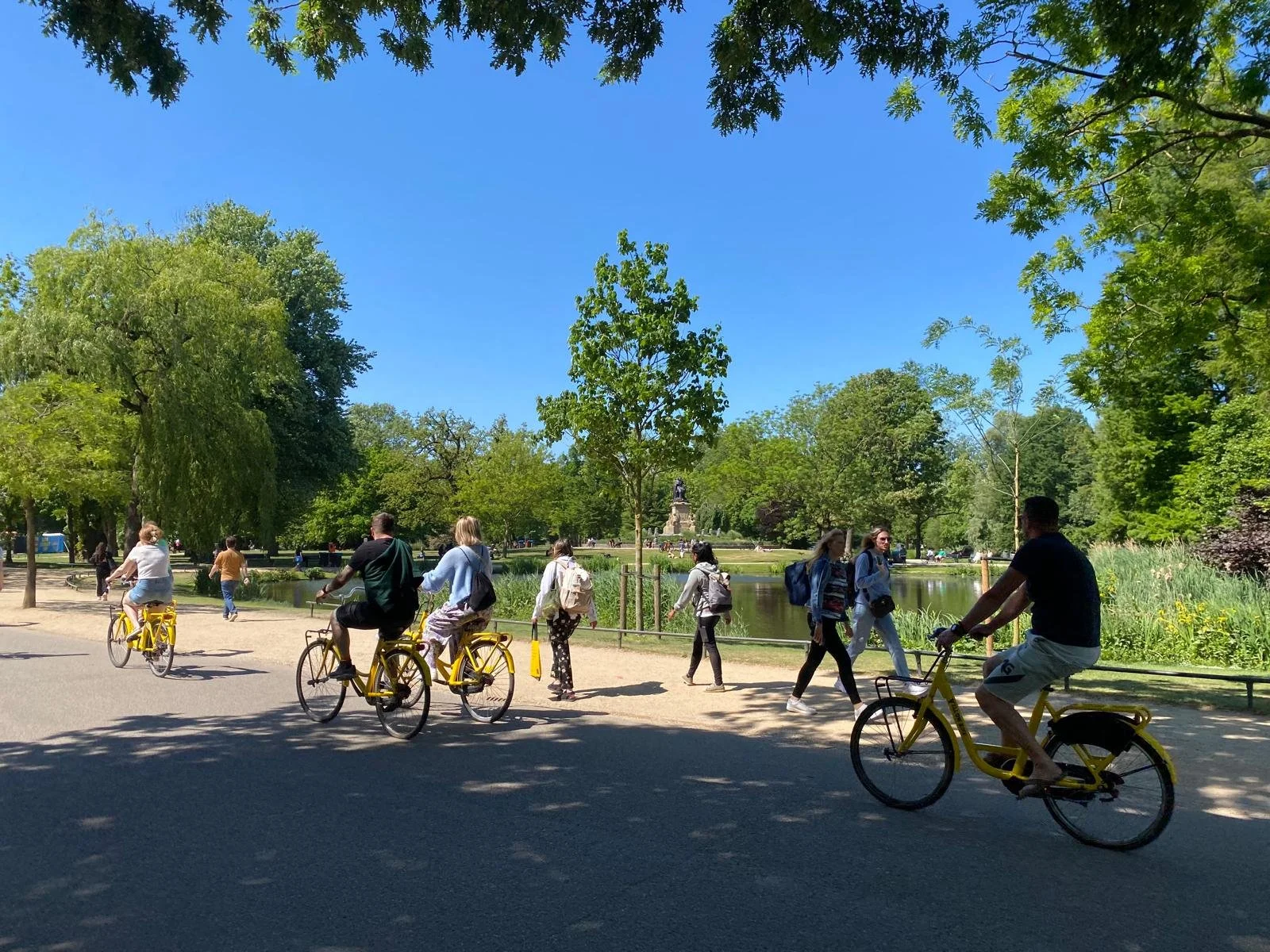Amsterdam: A city where constraints drive creativity in one of Europe’s most liveable capitals
The P-Three team have just landed from our annual trip to look for the latest trends and hottest brands from across the globe. This year’s location was Amsterdam.
Amsterdam is a city that thrives under pressure. With restrictive planning policies, tight floorplates, and protected heritage zones, it is a market where creativity is not optional - it’s essential. In the main city centre, opportunities are limited. Units are small, quirky, and hard to come by. Leisure and hospitality brands face strict licensing controls and new openings are challenging unless operators inherit an existing licence. For international brands, this creates high barriers to entry as well as a highly curated local landscape.
But what the centre lacks in flexibility, it makes up for in quality of life. Pedestrianised streets, good public transport links, and limited car use combine to create one of the most liveable urban environments in Europe. The impact on placemaking is clear: less noise, more green, and a better balance between commercial activity and everyday life.
Al fresco dining is everywhere; the city’s compact units often spill out into terraces, maximising frontage and inviting activation. Streets feel calm, well-kept, and surprisingly green. Planters, trees, and pocket parks are part of the everyday fabric, not just design features. For a dense urban core, the level of planting (much of which seems relatively unplanned) is impressive.
Retail remains strong. Prime luxury streets like Pieter Cornelisz Hooftstraat are well-tenanted, with power house brands such as Cartier, Hermès, and Isabel Marant. Supply is tight, and demand remains consistent, driven by an affluent, design-conscious local population and a steady stream of global visitors.
Neighbourhoods to the west of the city show a different character: less formal, more mixed. Residential streets are layered with coffee shops, local retail, and smaller hospitality brands. It’s an area that feels lived-in but increasingly attractive to younger operators looking for community-led locations with a character of gentle density.
Further north, true urban regeneration is taking hold. The NDSM-Werf in Amsterdam-Noord is a standout example: a former shipyard turned cultural hub. Anchored by destinations like the Graffiti Museum and major urban sports events, it has quickly become one of the most interesting parts of the city for alternative culture, food, and creative workspace. It shows how former industrial areas can be repositioned successfully with culture as the first move, which then supports residential and office communities as demand gradually increases.
Vondelpark deserves special mention. It remains an under-the-radar cultural and wellbeing anchor for the city, combining events, fitness, cafes and outdoor space in one of the most attractive urban parks in Europe. It isn’t overbranded or overly programmed, it just works. How about dinner at Juno, a great example of the growth in hugh quality, laid-back dining in the city suburbs.
Mixed-use destinations are evolving too. Foodhallen is a best-in-class example, combining food, cinema, office, hotel, and retail within a former train warehouse in a single, cohesive space. It’s the type of project that reflects the city’s growing demand for multifunctional hubs that serve both residents and visitors.
Amsterdam’s planning controls are not easy to navigate. But that’s part of the point. They preserve the city’s scale, protect its heritage, and keep speculative development in check. Urban growth has largely been pushed out to fringe districts like Amsterdam-Noord, where former industrial land offers space and flexibility. The result is a city that expands cautiously; but with direction.
Amsterdam continues to perform well. The market has real limitations, tight regulations, limited space, but these have created a focus on quality over scale. The operators who succeed are the ones who adapt to these conditions.
In Amsterdam, doing less better is what works.
Article by Michaella Moreton, Associate Director, P-Three

